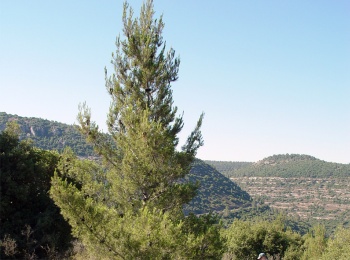A new study conducted at the Hebrew University predicts that in the coming decades dozens of tree species may become extinct due to climate change if humans do not intervene in time.

Global warming affects the earth in a variety of ways that require preparation. A new study conducted at the Hebrew University predicts that in the coming decades dozens of tree species may become extinct due to climate change if humans do not intervene in time. According to the study, trees that spread their seeds with the help of the wind will spread in the near future at a rate that will not match the rate of climate change.
The study, which examined the ecological impact of the expected changes in the climate and environment on plant populations, was conducted by Prof. Ran Natan, head of the Institute of Life Sciences at the Hebrew University, his student Nir Horvitz, and researchers from abroad.
The climate changes, which are already felt today and are expected to continue in the next 50 years, include phenomena such as the increase in the concentration of carbon dioxide in the air and the weakening of the wind speed in many parts of the world. According to previous studies, the increase in carbon dioxide concentration will cause the trees to produce more seeds and reach maturity earlier, in a way that will increase the rate of their spread in the future. On the other hand, the weakening of the wind in certain areas is expected to slow down the rate of expansion in the future. The question of whether these two opposing effects will offset each other remains unanswered. Moreover, so far we have not examined whether in the most "optimistic" case, where in areas where the wind is expected to increase, the increased seed production, early maturation and stronger winds will allow the trees to spread faster in the future in a way that matches the estimated rate of climate change.
"Our research predicts that the natural rate of spread of most tree species whose seeds are spread by the wind will increase, but even in areas where the wind is expected to increase, the rate of spread of trees will still be significantly lower than the rate of spread required in light of the changes in surface temperature," explains Prof. Natan. "This situation may cause the extinction in the future of populations and species of trees that will not be able to follow the shift of their habitat, which provides adequate conditions for growth and reproduction, towards the poles. As a result, the composition of the forests is expected to change and their area will be reduced, the products and services these forests provide to man may be harmed, and large-scale operations of controlled distribution of seeds will be required."
The study, whose findings were published this week in the prestigious journal Ecology Letters, is based on an innovative mechanistic model developed by the researchers to predict trends in the field of plant proliferation. The uniqueness of the model is that it allowed for the first time to examine how global warming will affect ecological processes that dictate the spread of trees. Forecasts made so far were based on past trends and did not take into account the expected future changes in the climate and environment.
In Israel, the research findings apply to local tree species such as Mila, maple and pine, whose seeds are spread by the wind. Also, this model will make it possible to predict the spread patterns of plants in different environmental conditions and can help in making decisions such as the ways to deal with the spread of foreign species, such as the glandular tree, that invade natural habitats.
Trees whose seeds are spread by the wind are mostly common in the forests of North America, Europe and Asia. The current research points to the necessity of finding alternatives to the natural propagation mechanism in order to prevent the extinction of trees in about fifty years, due to the expected changes in the climate and environment. "It is important that the forestry authorities in the relevant areas around the world understand that nature will not take its course," explains Prof. Natan. "Controlled steps must be taken to prevent the extinction of these trees, which are very important to global ecological processes, to the ecological functioning of forests, as well as to the various products and services these forests provide to man, such as the wood industry, maintaining water quality, recreation and tourism."

One response
Climate changes on the earth did not start in the last fifty years. The climate is affected by millions of variables and not only by a single variable, the level of co2 for example, therefore I am very satisfied if it is possible to influence the climate by lowering the level of co2 in the atmosphere. It seems to me that 65 million years ago, in the Jurassic era, the climate It was much warmer on the surface of the earth, without ice at the poles, and the amount of vegetation and trees in particular was greater